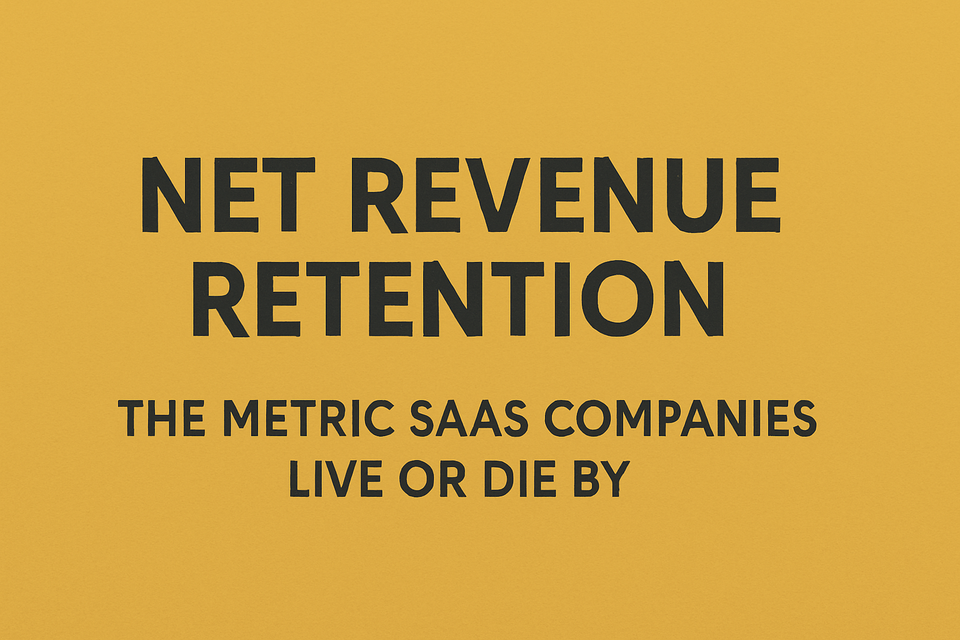Net Revenue Retention (NRR): The Metric SaaS Companies Live or Die By

What is Net Revenue Retention (NRR)?
Net Revenue Retention (NRR) is a key SaaS metric that shows how much recurring revenue you retain — including expansions, downgrades, and churn — from your existing customer base over a given period. It's a reflection of both your product’s value and your success in growing accounts. If your NRR is over 100%, it means your existing customers are spending more over time.
Why is Net Revenue Retention so important?
Why do investors love NRR?
NRR is a key health indicator for SaaS businesses. Unlike gross retention, NRR includes expansions (upgrades, additional seats, usage-based growth), which means it directly reflects how well your team turns users into long-term revenue. Top-performing SaaS companies often report NRR above 120%. According to OpenView's SaaS Benchmarks, best-in-class PLG companies hit 130%+ NRR.
How do you calculate NRR?
The formula for Net Revenue Retention is:
For example, if you started the month with $100K in MRR, gained $20K from expansions, lost $5K to churn, and $5K to downgrades, your NRR would be:($100K + $20K - $5K - $5K) / $100K = 110%
A result over 100% means your revenue is growing even before acquiring new customers.
What’s a good NRR benchmark?
Benchmarks vary by company size and model:
- 100%+: healthy and sustainable
- 120–130%+: top-tier SaaS (especially enterprise or PLG)
- <90%: red flag — likely issues with onboarding, product fit, or value delivery
Tools like Customerscore.io help CS and RevOps teams track NRR in real-time and link it to customer behavior and upsell triggers.
What drives NRR up?
If you want to grow NRR, focus on:
- Product-led growth (PLG) features like usage-based pricing or seat expansion
- Upsell campaigns tied to customer health scores or lifecycle events
- Retention strategies that prevent logo and revenue churn
A high NRR signals that your team isn’t just retaining customers — they’re growing them.
FAQ
How is NRR different from GRR?
Gross Revenue Retention (GRR) excludes expansion revenue and only considers churn and contraction. It shows pure retention, while NRR reflects growth within the customer base.
How often should I track NRR?
Monthly and quarterly tracking is recommended. Fast-growing SaaS companies monitor it closely, especially when raising capital or scaling CS.
Should I track NRR by segment?
Yes — segment by plan size, vertical, or region to spot patterns and identify which customers are growing fastest. Customerscore.io helps you visualize this.
Can NRR be above 150%?
Yes, especially in usage-based pricing models or viral PLG motions. Snowflake, for example, reported 180%+ NRR at IPO.
